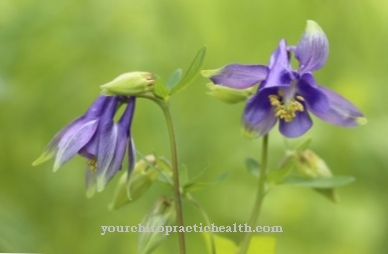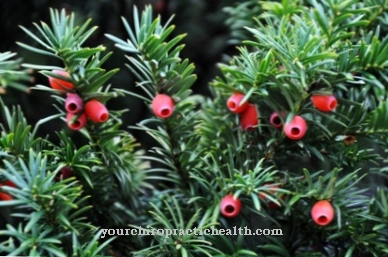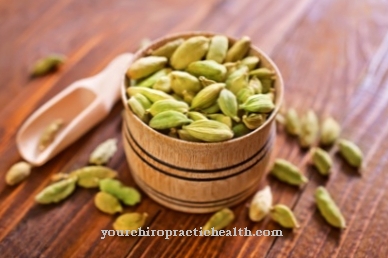Occurrence & cultivation of bladderwrack

The perennial olive-green bladderwrack consists of leather-like, widely branched algae leaves (thalli). They are 10 to 30 cm long, have a central rib and protuberances on top that are filled with air. These gas bubbles help the seaweed stand up in the water. During the warm season of the year, warty fruiting bodies filled with mucus form at the ends of the leaves, which are used for reproduction.
The seaweed is covered with a thin layer of mucus that prevents it from drying out at low tide. It is anchored to rocky ground and driftwood with the help of an adhesive plate. In the event of a storm, the bladderwrack is washed up on the beach and can be collected there. Before use, however, it must be washed thoroughly and dried at a maximum of 60 degrees Celsius. Bladderwrack thrives in the upper intertidal zone and occurs in the North and Baltic Seas at depths of up to 3.50 meters. Why this is so has not yet been clarified.
Scientists assume that the algae leaves do not receive enough light in greater water depths. In addition to the North and Baltic Seas, the seaweed occurs in the northern Atlantic as far as the Canary Islands and the Pacific. Even the ancient people valued its positive effect on human health. Since the discovery of the chemical element iodine in 1811, seaweed has been the most important natural source of iodine.
Effect & application
Bladderwrack contains organic iodine compounds, alginic acid, polysaccharides, beta-sitosterol, polyphenols, iron, xanthophyll, bromine, beta-carotene, vitamin C, calcium, magnesium and a high amount of sodium as the most important ingredients. Since the iodine content of the plant body fluctuates strongly, users should definitely have their thyroid values checked beforehand. The same applies, of course, to the time you use bladderwrack preparations.
In naturopathy, seaweed is used in various dosage forms against a variety of health problems. Internally it is used in tablet form, as capsules, drops and herbal tea. In homeopathy it is used as globules of various potencies, drops and as a mother tincture. In thalassotherapy, bladder wrack is used externally as a bath additive for seaweed baths.
Kelb is well tolerated in the correct dosage in the presence of certain clinical pictures. However, people with an iodine allergy, hyperthyroidism, high blood pressure and heart disease should not use the natural remedy. The same applies to breastfeeding women, children and pregnant women - unless the pregnant patient suffers from an underactive thyroid.
Interactions with other agents have not yet been found with bladder wrack preparations. Side effects only occur if the agents are not used as intended or if they are overdosed.
Importance for health, treatment & prevention
Because of its very high iodine content, bladder wrack promotes thyroid activity. Seaweed natural remedies are used to treat and prevent hypothyroidism and goiter formation. In patients who suffer from these complaints, they also stimulate the metabolism. They increase the basic energy metabolism when the body is at rest and thus also reduce weight.
People with iodine deficiency and goiter (goiter) take 5 to 10 homeopathic drops in the potency D1 three times a day. Patients with iodine deficiency-related obesity (adiposity) are recommended to take 10 to 20 drops of this potency. According to the latest research, the slimming effect is greatest in patients with blood group 0. Myxedema and cardiovascular problems caused by a sluggish thyroid can also be treated well with bladder wrack.
Centuries of use show that bladderwrack even helps with constipation. The digestive effect comes about through the alginic acid. Used internally, seaweed supplements fight hay fever and allergic asthma. In the form of baths and rubs, they are used to treat skin diseases such as psoriasis.
Due to its anti-bacterial and anti-viral effects, bladder wrack is also used successfully against stomach pain and intestinal inflammation caused by Helicobacter pylori. As recent in-vitro studies show, the mucous substances (fucoidans) contained in seaweed prevent the bacterium from docking on the villi of the stomach and intestinal mucosa.
They also inhibit the growth of many viruses and bacteria: bladder wrack kills E. coli bacteria and Neisseria meningitidis strains and is also successful in the fight against herpes and cytomegaly viruses. It has been known for centuries that the old natural remedy prevents excess stomach acid and thus also heartburn. It is even used for rheumatoid arthritis: a large amount of seaweed is boiled and added to the bath water.
Regular 20-minute baths reduce inflammation in the joints and, with it, joint pain. In naturopathy, bladder wrack is also known as a remedy for excessive sweating, for the treatment of arteriosclerosis and as a blood coagulant.
In homeopathic applications, the old remedy from the sea is used in potencies D1 to D6 against digestive problems (constipation, flatulence). From D6 onwards, it is used in the opposite direction according to homeopathic teaching. It then helps treat overactive thyroid and emaciation. In such high potencies, homeopathic bladderwrack drops and globules can even be used by patients who suffer from an iodine allergy. However, you should still consult your doctor beforehand.




.jpg)























